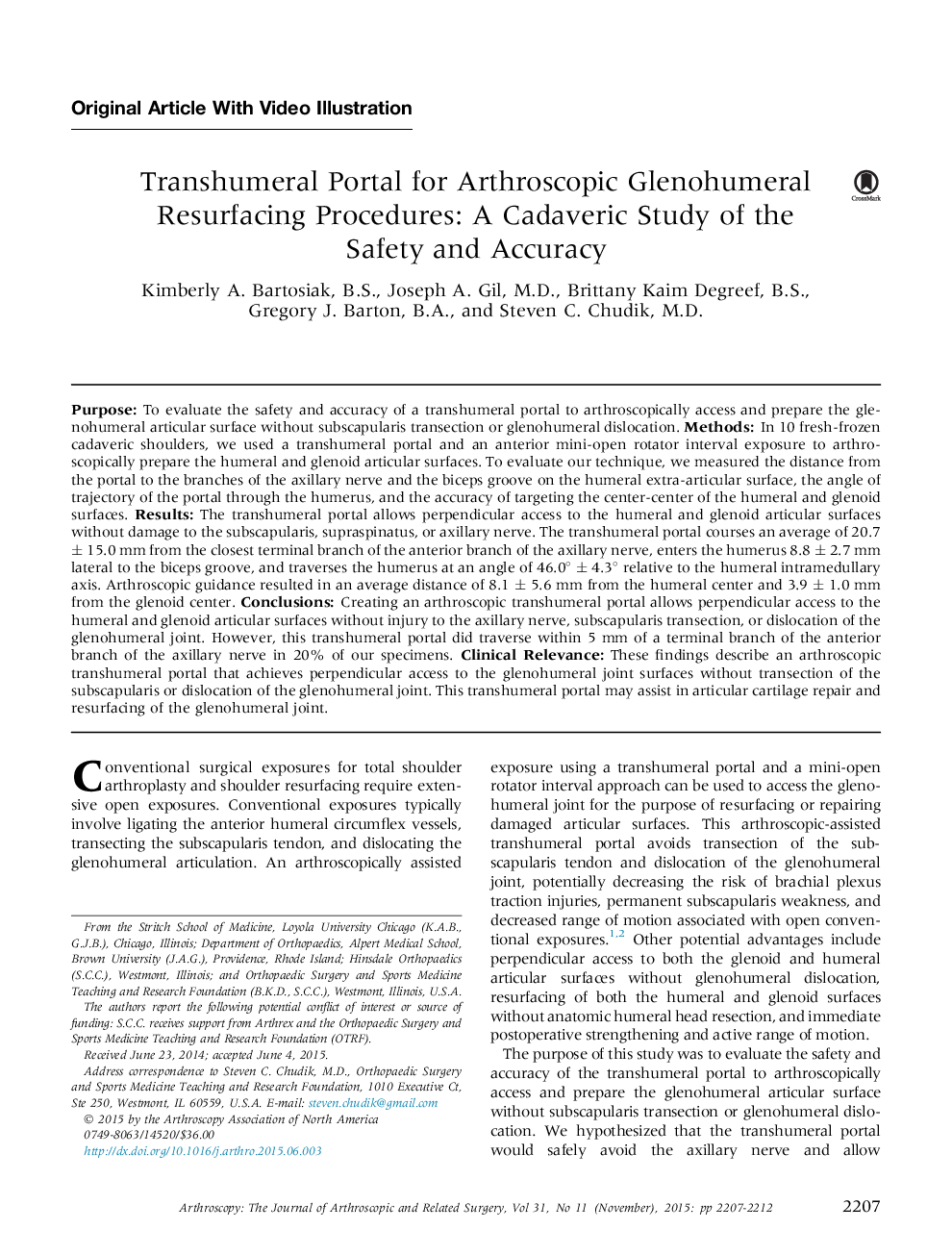| Article ID | Journal | Published Year | Pages | File Type |
|---|---|---|---|---|
| 4042134 | Arthroscopy: The Journal of Arthroscopic & Related Surgery | 2015 | 6 Pages |
PurposeTo evaluate the safety and accuracy of a transhumeral portal to arthroscopically access and prepare the glenohumeral articular surface without subscapularis transection or glenohumeral dislocation.MethodsIn 10 fresh-frozen cadaveric shoulders, we used a transhumeral portal and an anterior mini-open rotator interval exposure to arthroscopically prepare the humeral and glenoid articular surfaces. To evaluate our technique, we measured the distance from the portal to the branches of the axillary nerve and the biceps groove on the humeral extra-articular surface, the angle of trajectory of the portal through the humerus, and the accuracy of targeting the center-center of the humeral and glenoid surfaces.ResultsThe transhumeral portal allows perpendicular access to the humeral and glenoid articular surfaces without damage to the subscapularis, supraspinatus, or axillary nerve. The transhumeral portal courses an average of 20.7 ± 15.0 mm from the closest terminal branch of the anterior branch of the axillary nerve, enters the humerus 8.8 ± 2.7 mm lateral to the biceps groove, and traverses the humerus at an angle of 46.0° ± 4.3° relative to the humeral intramedullary axis. Arthroscopic guidance resulted in an average distance of 8.1 ± 5.6 mm from the humeral center and 3.9 ± 1.0 mm from the glenoid center.ConclusionsCreating an arthroscopic transhumeral portal allows perpendicular access to the humeral and glenoid articular surfaces without injury to the axillary nerve, subscapularis transection, or dislocation of the glenohumeral joint. However, this transhumeral portal did traverse within 5 mm of a terminal branch of the anterior branch of the axillary nerve in 20% of our specimens.Clinical RelevanceThese findings describe an arthroscopic transhumeral portal that achieves perpendicular access to the glenohumeral joint surfaces without transection of the subscapularis or dislocation of the glenohumeral joint. This transhumeral portal may assist in articular cartilage repair and resurfacing of the glenohumeral joint.
